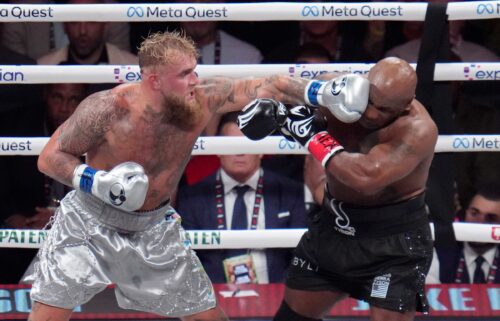Michigan State students’ training kicked in during shooting
By JOEY CAPPELLETTI and MIKE HOUSEHOLDER
Associated Press
EAST LANSING, Mich. (AP) — When the texts began coming in about a shooter at Michigan State University, training that many students started receiving as schoolchildren automatically kicked in.
They ran. They found a place to hide. They locked and barricaded the doors. They turned out the lights. Then they waited as a gunman who killed three students and wounded five more eluded police for about four hours.
They are part of a generation that has grown up with active shooter drills. Schools and districts across the U.S. implemented such training after the 1999 Columbine High School massacre and the practice has evolved and grown since the Sandy Hook Elementary School shooting in Newtown, Connecticut, that killed 20 children and six educators.
“First, we were taught to be quiet. Run. And then to fight if you are caught,” said Michigan State junior James Cameron, who added that the first lockdown he experienced was in elementary school, when there was a shooting a block away.
Many school districts use ALICE training, which stands for alert, lockdown, inform, counter and evacuate.
Fighting back is a final option. Students and educators are taught to use scissors, pencils, pens, books, fire extinguishers and any other item they can find as weapons.
“Our generation has never been safe at school and in places of celebration and in places of peace,” said Jacob Toomey, a Michigan State student who is also a commissioner in nearby Eaton County, who recalled his high school’s active shooter drills while speaking at an event Wednesday at the Michigan Capitol in Lansing.
All of the people shot at Michigan State on Monday night were students. The lockdown ended after the gunman, 43-year-old Anthony McRae, killed himself miles away when confronted by police. Authorities were still trying to determine a motive Wednesday and have said he has no known connection to the university.
Senior Jamison Bandivas ran into a Target store after hearing someone had been shot at the student union nearby. He and others barricaded themselves in the back of the store, he said, and he watched another student write a “goodbye letter” on a Valentine’s Day card.
Architecture student Clay Griffith hid in an office, then texted his friends about the best places to hide because “the shooter’s path was my daily walk,” he said. But he also said Americans are no longer shocked by mass shootings — or the preparations their children undergo.
“I’m not surprised, especially when my 9-year-old sister comes home with a homework assignment of what to do if there’s a school shooter,” he added. “These past few days we’ve been saying all the slogans and mechanisms that we’ve been learning since we were children.”
For some students, it was not their first experience with a mass shooting. A few attended Oxford High School, where four teens were killed 14 months earlier, on Nov. 30, 2021, some 70 miles west of Michigan State.
Matthew Riddle recalled the conversations he had with his daughter, now a Michigan State student, after she survived the Oxford shooting.
”‘Lightning doesn’t strike twice, right? This has happened to you and it can’t happen again, right? To Oxford, to you or anybody else,’ and frankly that’s not true,” Riddle told NBC News.
Maya Manuel, organizer of Wednesday’s protest, asked people to raise their hands if they had “experienced lockdown drills.” Almost all of the MSU students seated on the Capitol steps in front of Manuel had their arms up in the air.
Democratic U.S. Rep. Elissa Slotkin suggested parents and others might benefit from witnessing the drills their children experience.
“I think there’s a generational divide. And I heard a couple of students say they wanted to invite our elected officials to participate in these lockdown drills, have them experience what it’s like with our third graders,” Slotkin told The Associated Press. “And I think there’s something to that because, even for me, I didn’t experience it.”
Later Wednesday, hundreds of students gathered for a campus vigil also attended by school officials, religious leaders, Gov. Gretchen Whitmer and Hall of Fame basketball coach Tom Izzo, whose son Steven is a Michigan State student.
Izzo said Steven “was at one of the buildings two nights ago about 10 minutes after things happened.”
He also said he, Whitmer and others visited the hospital where the injured students are “fighting for their lives.”
“I can’t begin to imagine what all of you are going through,” he told the students, who poured into a site near “The Rock,” a community gathering place that has become a makeshift memorial in the days since the attack.
The event concluded with all in attendance singing the alma mater, arms around each other, swaying to the song.
___
Associated Press writer Corey Williams in West Bloomfield, Mich., contributed to this story.


